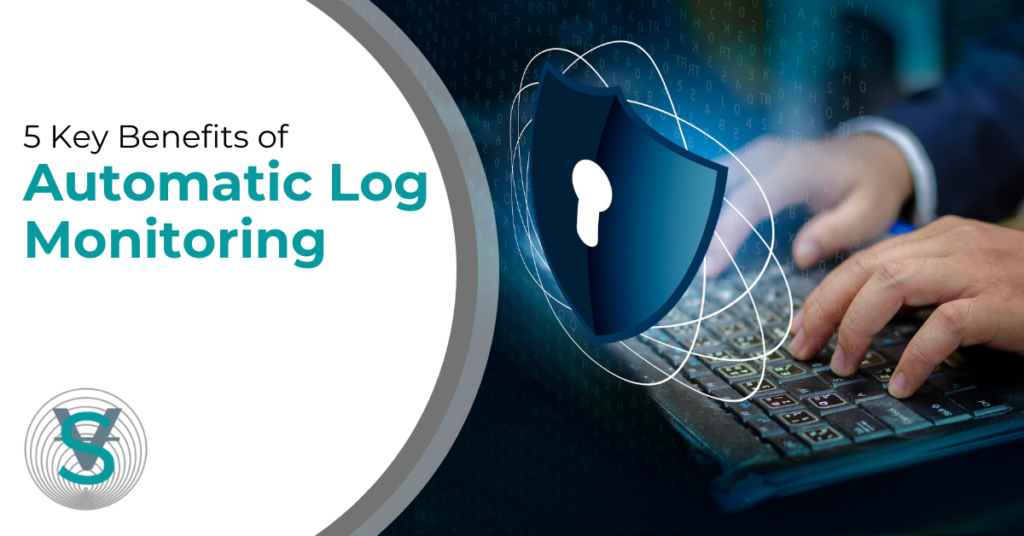
5 Key Benefits of Automatic Log Monit
The number of applications that companies use, especially SaaS (Software as a Service) apps has skyrocketed in recent years. Currently, it’s estimated that businesses with fewer than 50 employees use an average of 16 different SaaS applications, while companies with 50-99 employees use about 24 different apps.
Each of these applications makes up your business technology workflow and is essentially what you’re using to run your operations (including everything from customer support to accounting).
All of these software applications, as well as various internal network applications, have multiple events you need to keep track of. This can include downtime, unusual traffic activity, security update installations, bugs, and more.
What is Log Monitoring?
Log monitoring is the review of the various application logs to look for patterns, such as an unusual activity that could signal a cyberattack or events that cause system downtime. Reviewing activity logs for an app can also indicate when a conflict is occurring between an application and one of your security systems, like a firewall.
Some of the metrics that are collected in logs that applications generate automatically include:
- CPU load & memory
- Number of simultaneous connections to an app or network
- Errors
- Access attempts blocked by a firewall
- Use logins
- File uploads
- Uptime availability
Often companies start their log monitoring process by manually logging unusual events as they note them. Such as the last time an app was updated and to what version, or a downtime event and the reason for it.
Monitoring these application and network logs allows for proactive actions to prevent threats or expensive network downtime. Rather than being proactive after an event has already happened, log monitoring can provide alerts that allow situations to be addressed before they lead to a data breach or other serious incident.
However, this manual process can become overly time-consuming. This is especially true as business networks evolve to have more components and moving parts. Many companies have had to move to a hybrid working environment, which often requires additional digital infrastructure. More applications and network activity mean more log events to monitor.
How do you do this effectively? Use an automated log monitoring system.
Looking for cybersecurity essentials? Download our eBook for business owners.
What is Automated Log Monitoring?
Automated log monitoring optimizes and consolidates the viewing of logs. It significantly reduces the time it takes to identify behavioral anomalies, especially in a multi-application environment.
These systems pull in log data from all your applications, so you have one place where you can view network activity.
These tools will also come with alert systems and centralized dashboards that provide comprehensive visualizations and allow administrators to filter through multiple variables to drill down into important insights.
Advantages of Automated Log Monitoring
Centrally located management
An automated system for log monitoring connects to all your log sources. It consolidates your view of application events, which makes it easier to spot problems and address them across the network.
You can more easily discover the root cause of problems, instead of having to look at each log separately and try to piece together a correlation.
Warnings & Alerts
The warnings and alerts that you get through automated log monitoring systems mean that you don’t have to hire someone to keep an eye on your network 24/7. Smart warnings and customized alerts for various network activities can be sent to your team to notify them of things that need attention.
This frees up your IT team to focus on other tasks, while the automated system keeps an eye on logs and quickly spots any anomalies.
Get a Fuller Picture of System Stability
It’s important to understand when downtime and critical failures occur across your application and network environment. It can be difficult to get a full, comprehensive picture of this if you’re looking at logs in isolation from each other.
Keeping all log monitoring in a single system allows you to see patterns and understand how an outage in one system can impact other activities throughout your digital environment.
Improved security
You can better secure your applications and network when the monitoring process is automated. The system identifies any strange behaviors automatically that may be happening with:
- Authentication
- Authorization
- Access logs
- File upload patterns
- And more
Further, automated response actions can be implemented, such as locking an account after three failed login attempts.
Saves time
Moving from a manual log monitoring process to an automated one saves you a lot of time. Someone doesn’t need to be continuously looking through event logs, nor do you need to have logs monitored by a person at all times.
The automated system handles the heavy lifting and can instantly identify patterns that require attention. It also can be programmed to correct certain events with automated actions. It then just reports on what has taken place.
Are You Interested in Automated Log Monitoring for Your Company?
Vishnu Security can assist your business with an automated log monitoring solution and other cybersecurity tools.
Schedule your free consultation to learn more today!